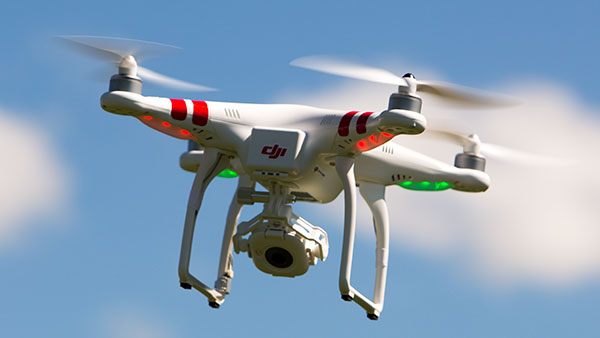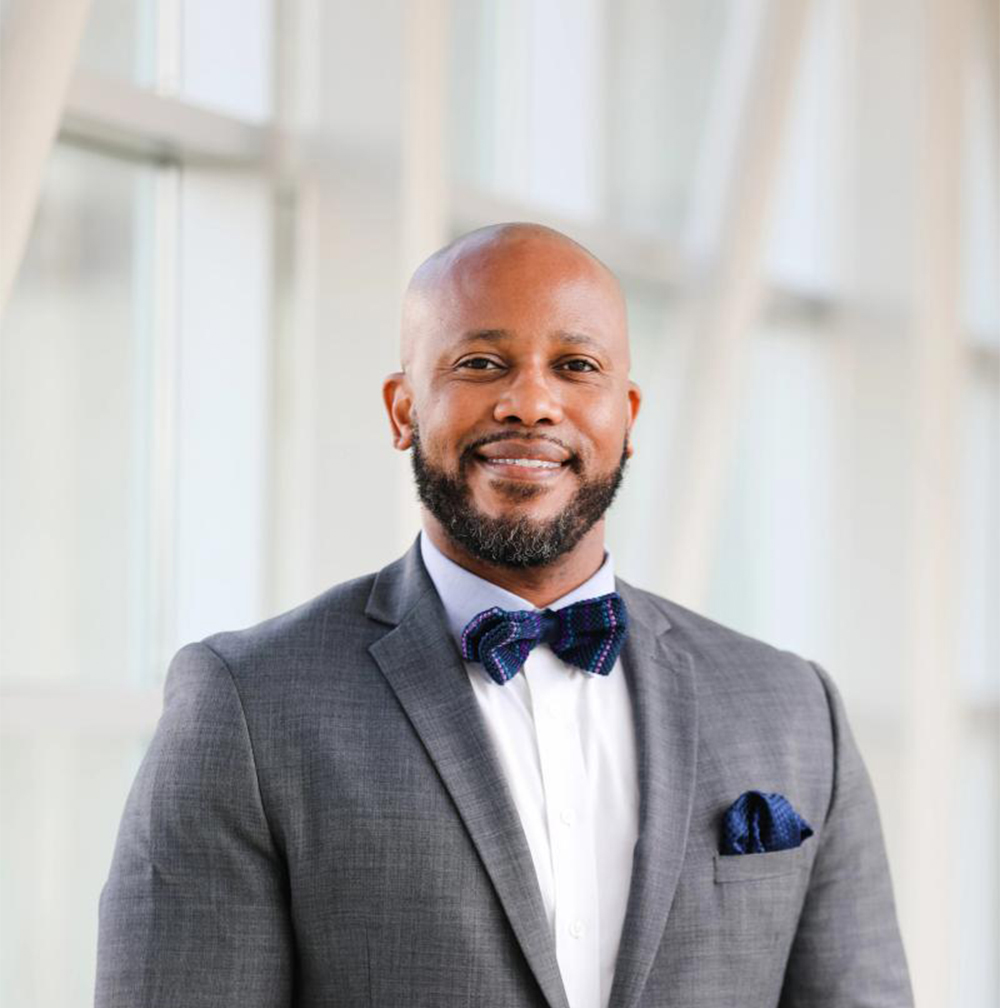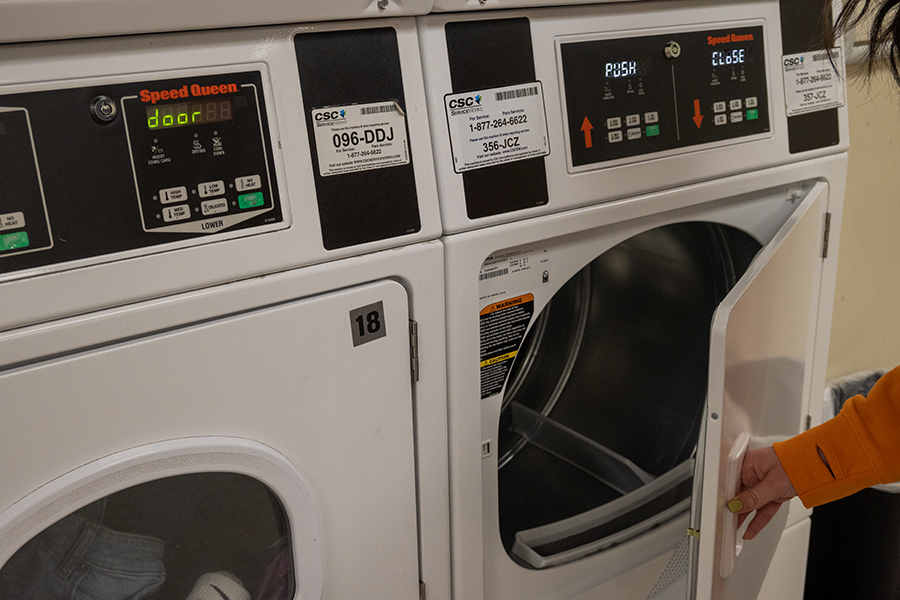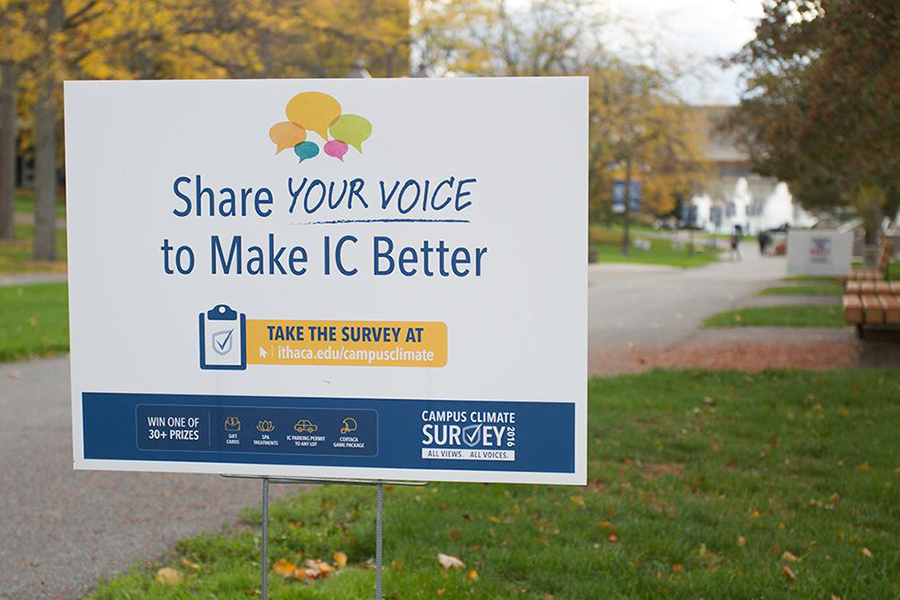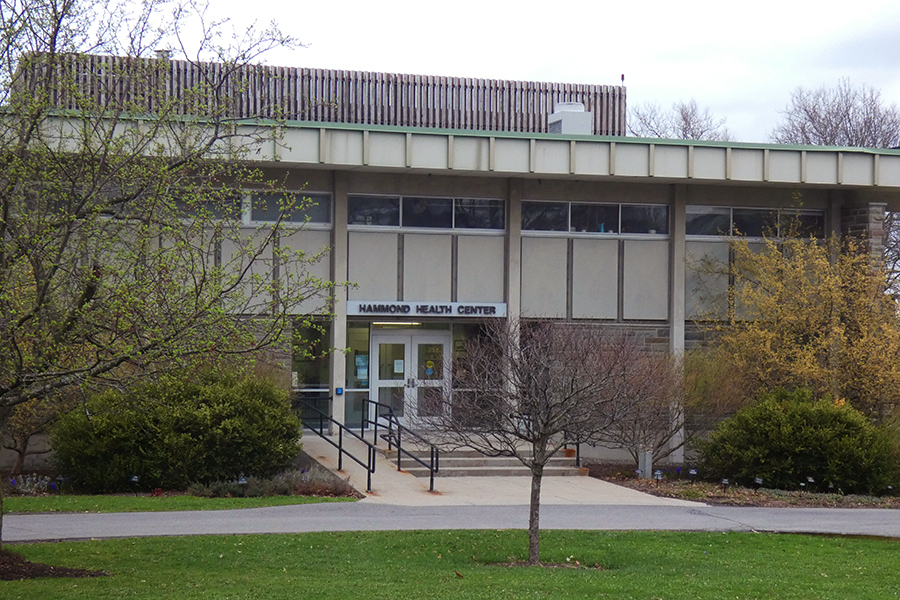Four glossy, white, plastic rotor blades propel its 40-ounce frame, complete with a camera capable of shooting video or taking still photographs up to 100 meters in the air. It can cost as little as $200, but using one for commercial purposes can result in a $10,000 fine.
Unmanned aerial vehicles, commonly known as drones, were the cutting-edge military technology in the early 2000s, but now they’re a part of the new wave of media technology.
Ari Kissiloff, assistant professor of strategic communication, said an email conversation with Diane Gayeski, dean of the Roy H. Park School of Communications; Park School professors; and representatives from both the Office of Risk Management and the Office of Public Safety and Emergency Management about Ithaca College’s policy on drones opened up in July 2014. Kissiloff said the initial discussions that began this summer are ongoing.
Gossa Tsegaye ’76, assistant professor of media arts, sciences and studies, said UAVs are a “new phenomenon” in the film and media industry. While there is not currently an official proposal to purchase drones, Tsegaye said he believes drones could be a part of the Park School’s upcoming technology purchases in the next year.
Both Tsegaye and Kissiloff have some experience with the use of drones. Kissiloff owns a Parrot AR Drone 2.0, which he uses for recreational purposes. Likewise, Tsegaye will be using a drone for filming his documentary “Sacred Patches,” about an Amish community in Central New York.
Tsegaye said a UAV will allow him to get intimate and wide-frame shots of the Amish community members without intruding into their personal lives. He said a student script must call for a shot that requires a drone, rather than inciting students to overuse a drone just for the sake of flying what he calls a “digital kite.” Tsegaye said he wants to include drones in the curriculum to make sure his students are prepared to utilize new technology in their field.
“I don’t want my students to fall behind when they graduate because they’ve never been exposed to [drones],” Tsegaye said. “I don’t want them to lose a job to the next guy because he or she had a drone experience.”
[acf field=”code1″]
[acf field=”code2″]
Drones have become increasingly popular in the media industry over the past year. CNN and the Georgia Institute of Technology announced they would be studying how to safely operate drones, David Vigilante, CNN’s vice president of legal, said in a statement June 25.
“Our hope is that by working cooperatively to share knowledge, we can accelerate the process for CNN and other media organizations to safely integrate this new technology into their coverage plans,” he said.
Currently, the Federal Aviation Agency bans drone flights for commercial purposes in the United States, according to the FAA website. This includes both public and uncontrolled airspace. The FAA classifies uncontrolled airspace as airspace away from airports and over unpopulated areas. Only a single commercial operation in such areas has been approved by the FAA.
“A commercial flight requires a certified aircraft, a licensed pilot and operating approval. To date, only one operation has met these criteria, using Insitu’s ScanEagle, and authorization was limited to the Arctic,” the FAA website states.
The FAA does not regulate model aircraft, as long as the aircraft follows certain statutory requirements, which under the FAA Modernization and Reform Act of 2012 limits the aircraft’s weight to 55 lbs, to only being used for recreational use, and not interfering with manned aircraft.
With the interest in utilizing drones as part of the curriculum comes a multitude of questions about the regulations surrounding their use. Kissiloff said he understands the legal dilemma, but also realizes there is a lack of FAA enforcement on photographers utilizing drones for their shoots.
“I know that technically you can’t shoot [footage with UAV] and then charge for it,” Kissiloff said. “I know that plenty of people do.”
Local company photography4d.com utilizes UAVs to film and photograph events in the Ithaca area as free promotional work. Owner Joe Scaglione took aerials of Ithaca College campus for ICTV on Aug. 29. Though he can’t charge for aerial shots taken from a drone due to the FAA ban, Scaglione, who said he has been flying drones since 2007, said he flies the drones to promote tourism and travel in the area. However, Scaglione said the FAA’s ban is hindering economic growth.
“[Drones] could be a serious boost to the economy, yet only professionals should be authorized to fly them,” Scaglione said.
The FAA has also stifled colleges’ efforts to use drones to educate. In June 2014, the University of South Florida revealed plans to lend students drones. According to CNN, USF purchased two drones, valued at $1,500 each, and was planning on requiring students to receive training before being able to operate the drones. However, the FAA grounded the program this month because the university charges students for the course through which they would use the drones, thus classifying the use as commercial, according to Aero News Network.
Adam Freeman, media and public affairs coordinator at USF, said in a statement on Sept. 3 that the school is still planning to pursue the issue.
“As policies for the program are still being developed, the drones are not available at this time,” he said. “However, the University plans to seek approval from the FAA for student use of the drones.”
Terri Stewart, director of Public Safety, said she supports the concept of utilizing drones for educational purposes. Stewart said she was a part of the initial discussions about the possible introduction of drone technology to the classroom, but she remains concerned about potential issues regarding approval from the FAA.
“I am cautious due to the recent banning of drones in select areas for a multitude of reasons,” Stewart said.
Kristine Slaght, risk manager for Ithaca College said there is not currently a college drone policy, but all individual recreational users must comply with federal regulations. Slaght also said the college may need to implement a drone policy.
“It is possible that the College would need to implement additional parameters for safety and/or privacy concerns,” she said.
The integration of drones into the Park School will not happen overnight. Kissiloff said he recognized the complexity of integrating drones into the curriculum.
“People checking them out and flying them on their own, that requires a whole infrastructure, and I don’t seeing that put into place [within the year],” Kissiloff said.
However, drones could be used in demos by professors in classes during this semester. Tsegaye brought in Photography 4d to demonstrate one of its UAVs to his summer media production class, and Kissiloff said he would be bringing his UAV into his filming classes to demonstrate its flight. In addition, The Ithacan photographers began using a drone earlier this month.
Kissiloff said he recognizes the challenges presented by drones because of their differences from other camera mounts and understands the complexity of incorporating them into everyday filming.
“Adding a new camera is relatively simple.” he said. “As I said before it is just a new camera mount, but it is a very different beast.”

